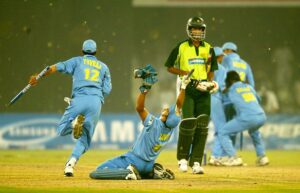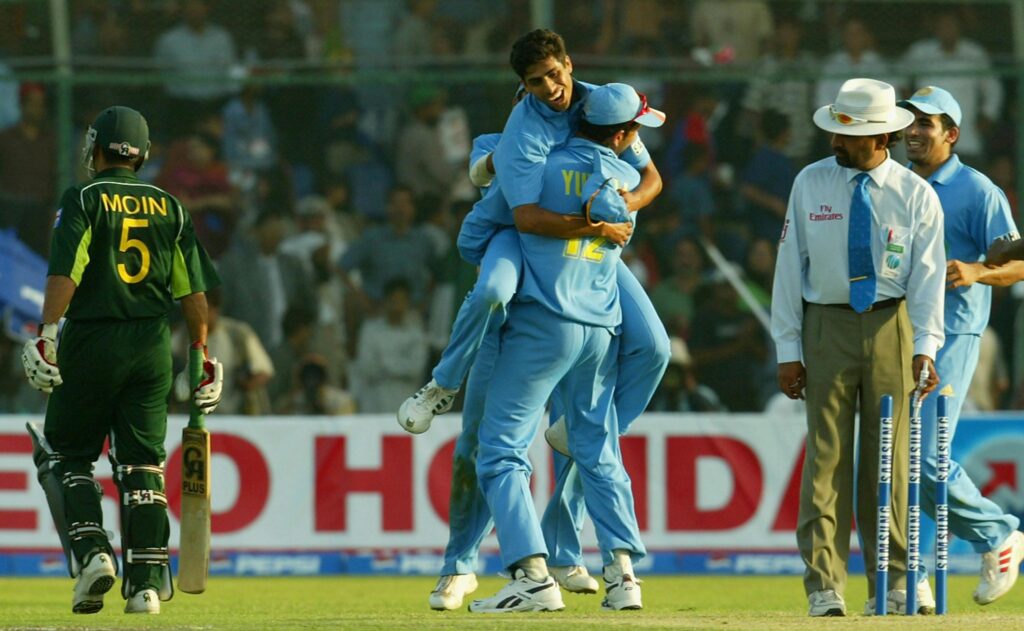
RevSportz Comment
It’s difficult to imagine that two decades have flown by. For a younger generation, in an age when bilateral ODI series mean top players being rested and lukewarm interest, it’s next to impossible to understand just how much attention there was on India’s tour to Pakistan in 2004. The Sunday Times in London had an entire page of the sports section previewing the series. The following Sunday, another full page contained a match report from Karachi and a colour copy taking in the mood in India. Things were no different during the Test series that followed. One full page would usually be devoted to cricket in the lands beyond what MM Kaye had described as The Far Pavilions.
For once, Sir Alex Ferguson’s Manchester United and an Arsenal side chasing an unprecedented unbeaten season in the league were relegated to the margins, as Sourav Ganguly’s India and Inzamam-ul-Haq’s Pakistan made the world stand still. To be fair, the action matched the hype, too. That first ODI at the National Stadium was one of the greatest ever played, settled only on the final ball bowled by Ashish Nehra.
Up on the home balcony, Javed Mianded, the coach, watched intently as Moin Khan settled into his stance. A generation earlier, Miandad had left Indian cricket traumatised with a last-ball six off Chetan Sharma in Sharjah. No stroke in history had altered the course of a rivalry quite like that. Now, an Indian team that had played without fear, and led by Ganguly’s in-your-face captaincy, had taken Pakistan down to the wire on their own turf.
As was the case in Sharjah those years earlier, the final ball was a full toss. But this one came at Moin with the left-armer’s angle and at an awkward height. His attempt to clear the infield ballooned off the leading edge to Zaheer Khan at cover. As Miandad winced in disappointment, millions in India celebrated one of the more cathartic moments in the country’s sporting history.
For the Latest Sports News: Click Here

In the weeks that followed, with Strings and Euphoria singing Jeet Lo Dil [Win Hearts] as the soundtrack, the action was unforgettable. India won the ODI series in Lahore, with the unlikely figure of VVS Laxman – left out of the World Cup squad in 2003 – scoring a century. And after never having won a Test on previous trips across the border, victories in Multan [a Virender Sehwag triple-century] and Rawalpindi [Rahul Dravid’s 270] ensured a famous victory.
Irfan Pathan confirmed that he was a rare all-round talent, while Lakshmipathy Balaji became a cult hero among Pakistani fans after smacking Shoaib Akhtar for six. Thousands of Indians were given visas to go across the border and watch the matches. Those that did often don’t have the words to describe the hospitality and warmth that greeted them. ‘Aap hamara mehmaan he [You are our guests]’ became a sentence that even non-Hindi/Urdu-speakers quickly became acquainted with.
For the players, too, it was the trip of a lifetime. Some went to Harappa to see the remains of civilisation’s cradle, while other trekked across the ruins of the old seat of learning in Taxila. The Khyber Pass became a photo opportunity for some, and Sachin Tendulkar, among others, enjoyed the delicacies that Lahore’s famous Food Street, in the shadow of the magnificent Badshahi Mosque, provided.
Atal Bihari Vajpayee, then India’s Prime Minister, had been instrumental in trying to normalise diplomatic relations when he was foreign minister in the late 1970s. This cricket-for-peace initiative also had his imprint, and though he was voted out weeks after the Indian team returned, the sport’s greatest rivalry saw plenty of bilateral matches in the four years that followed.
Then came the terror attack in Mumbai in November 2008. The rest is bitter history. A generation of players led by Virat Kohli have never played an international game in Pakistan. That’s unlikely to change any time soon. But for all those – players, journalists and fans – who were lucky enough to savour the 2004 experience, the memories will remain evergreen. In an era of wall-to-wall marketing, it’s customary to be told that ‘the world is watching’. In the case of that long-ago series, that was no hyperbole.
Everyone watched, and was enthralled.
Also Read: Excellence is a natural endpoint of the process: Sourav Ganguly




